PSAP, Assistive Listening Device, or Hearing Aid? 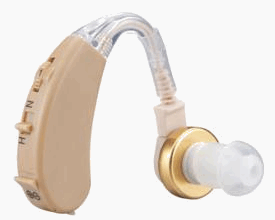
To many people, any differentiation between these terms is confusing. Some contend that if it amplifies and looks like a hearing aid, it is a hearing aid. If that is the case, what is the difference between a Pocket Talker and a body hearing aid? They both amplify and look like body hearing aids. Is it because one has custom-molded earpieces and the other does not? To use this as a differentiation would put us on a very slippery slope. Many of today’s hearing aids no longer use custom earmolds, but some kind of universal fitting tip of different sizes.
My purpose here is not to define this distinction or to advocate for one over the other, but merely to report on those products and issues that are creating this confusion and controversy. With that in mind, what follows is a posting of some of the primary PSAPs (Personal Sound Amplification Products) available today. Companies offer these products outside of the established hearing aid industry distribution system, and are selling increasing numbers of amplification devices directly to consumers.
Neutronic Ear
The company was founded in the early 1990’s by Michael Nehr, who was trained and practiced as an audiologist, as Crystal Care International (CCI), and has sold hundreds of thousands of amplification devices under the name Crystal Ear, directly to consumers. The company was developed on the basic principle that America’s mature population should not suffer with hearing difficulties for as long as reports show them to before they seek hearing help. CCI believed that crisp and clear sound amplification in an affordable package should be available. 
In 1996 the FDA sent a warning letter to the company stating that they believed CCI’s products were hearing aids, and that representing them as ALDs (Assistive Listening Devices) was misleading. CCI insisted that they were ALDs and not subject to the FDA hearing aid regulations. Attempts by various states to prevent CCI from selling by mail order by adding this provision to their state licensing laws were ruled invalid by the 8th Circuit Court of Appeals.
Eventually, CCI modified their advertising text and in 2010 or so, began using the name Neutronic Ear for their products. The device ships directly to the customer, and is ready to use out of the box. No tests or office visits are required to self-test for the listening device. The products are not considered as hearing aids, nor as ALDs, but as PSAPs or personal amplifiers, designed to help a high percentage of persons experiencing some form of hearing difficulties. A 30-day in-home trial allows one to try the unit in home, everyday life situations.
Crystal Ear PRO – Although many in the hearing aid industry have criticized CCI, some audiologists planned on teaming with the company to launch a program called Crystal Ear PRO, in 2005. This was a partnering attempt with Involutions, Inc., an audiologist run company. The product was to provide an entry point to consumers that would drive them into audiology offices and provide those offices with new leads of individuals who had identified themselves as having a hearing loss. The product for this program was identified as a hearing aid, and was to be a low-gain, non-custom, digital, ITE unit to be sold at a price of about $380. It was to be marketed to adults as a hearing aid for those who wanted a little help. The Program was described as allowing an audiologist to compete successfully in the price-driven atmosphere by offering consumers price and service choices without downplaying the value of professional services. Participation in Crystal Ear PRO was by invitation. Practices were to pay an initial fee and receive a marketing territory. Part of the initial fee was to be used for national and regional advertising. The group had hoped to have 100 franchises by the end of the first year. There seems to be no recent information about this program.
RCA Symphonix Personal Sound Amplifier
This product is sold under the brand name of RCA Symphonix. Is this my parents’ RCA? Yes and no. The logo is the original RCA logo. Business and financial conditions led to RCA’s takeover by GE (General Electric) in 1986, and its  subsequent breakup. GE then sold the rights to make RCA and GE brand consumer electronics products to Thomson Consumer Electronics of France. Thomson, in turn, sold the right to the brand to Audiovox Corporation (actually Voxx International). Voxx International entered the personal sound amplification market in 2011 with the RCA Symphonix brand name. So, legally, they own the RCA logo. No, it’s not my parents’ RCA in that the RCA company as a separate entity no longer exists. The product has been sold through Radio Shack, Amazon, Gold Violin, Harris Communications, and Best Buy (Focus Ear).
subsequent breakup. GE then sold the rights to make RCA and GE brand consumer electronics products to Thomson Consumer Electronics of France. Thomson, in turn, sold the right to the brand to Audiovox Corporation (actually Voxx International). Voxx International entered the personal sound amplification market in 2011 with the RCA Symphonix brand name. So, legally, they own the RCA logo. No, it’s not my parents’ RCA in that the RCA company as a separate entity no longer exists. The product has been sold through Radio Shack, Amazon, Gold Violin, Harris Communications, and Best Buy (Focus Ear).
Lee Majors Bionic Hearing Aid
This is a product of Hearing Assist LLC of Virginia Beach, VA. It is sold among others as Voice Clarifying Amplifier by 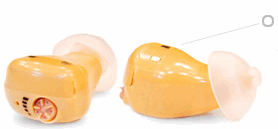 Iconix Brand Group, Inc., Hammach Schlemmer, Nova Tech Gadgets, Gold Violin, Bluestem Brands, Inc., Fingerhut, Overstock.com, and SharperImage.com. As much as the product is advertised, not much is published about the company. The Figure below provides the general organizational structure of the company.
Iconix Brand Group, Inc., Hammach Schlemmer, Nova Tech Gadgets, Gold Violin, Bluestem Brands, Inc., Fingerhut, Overstock.com, and SharperImage.com. As much as the product is advertised, not much is published about the company. The Figure below provides the general organizational structure of the company.
AmplifierTV Ears Sports
Since 1998 TV Ears writes that it has been helping people hear TV with over 500,000 satisfied users. Backed by the 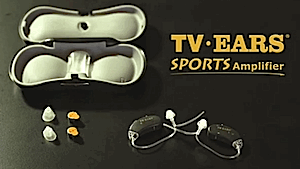 recommendation of thousands of Audiologist and Doctors nationwide, TV Ears has become the #1 selling brand for wireless TV listening devices. Recently, TV Ears built upon its success by introducing several new hearing care products to help people hear better in different situations such as on the telephone or at the dinner table, and also with a TV Ears Sports Amplifier Kit that is sold by various outlets throughout the US and Canada. The TV Ears Sports Amplifier advertising says that it will improve your focus and therefore enhance your performance in preferred activities such as golf, tennis, walking, dinner, parties, bird watching, and more. The TV Ears Sports Amplifier Kit comes with two TV Ears Sports amplifiers, extra ear tips, two batteries, and a cleaning tool.
recommendation of thousands of Audiologist and Doctors nationwide, TV Ears has become the #1 selling brand for wireless TV listening devices. Recently, TV Ears built upon its success by introducing several new hearing care products to help people hear better in different situations such as on the telephone or at the dinner table, and also with a TV Ears Sports Amplifier Kit that is sold by various outlets throughout the US and Canada. The TV Ears Sports Amplifier advertising says that it will improve your focus and therefore enhance your performance in preferred activities such as golf, tennis, walking, dinner, parties, bird watching, and more. The TV Ears Sports Amplifier Kit comes with two TV Ears Sports amplifiers, extra ear tips, two batteries, and a cleaning tool.
This Colorado headphone manufacturer introduced a line of affordable amplification devices in 2012. A first product, designed to fit into the ear, the Personal Sound AMP, sold at $800 a pair, and was designed to be an alternative to hearing aids. The product line now includes sound amplifiers that fit behind the ear as well. Able Planet’s goal is to open amplification and listening device markets everywhere, including hearing devices. The products feature advanced amplification technology, including environment management in 8 channels, 12 bands, 4 preset environment filters, noise reduction, and adaptive feedback manager functions.
QSA Bean
This is a personal sound amplifier available from Etymotic Research Inc., and can be purchased without medical referral or prescription. This is Etymotic’s Quiet Sound Amplifier (QSA®) which automatically enhances soft sounds, and allows loud 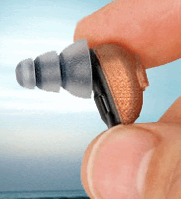 sounds to pass through naturally as if nothing is in the ears. The Bean provides high-frequency emphasis for soft sounds, so that faint sounds of speech can be heard more clearly – especially when the talker is distant or speaks very softly. The product is advertised as being appropriate for many users, something like reading glasses, which are used only part of the time. The Bean is intended to allow soft speech to be heard more easily in a house of worship, classroom, courtroom, lecture hall, theater, or from TV. The QSA Bean uses sophisticated analog processing which explains its natural sound and low battery drain. Full refunds are available within 30 days if customers are not satisfied.
sounds to pass through naturally as if nothing is in the ears. The Bean provides high-frequency emphasis for soft sounds, so that faint sounds of speech can be heard more clearly – especially when the talker is distant or speaks very softly. The product is advertised as being appropriate for many users, something like reading glasses, which are used only part of the time. The Bean is intended to allow soft speech to be heard more easily in a house of worship, classroom, courtroom, lecture hall, theater, or from TV. The QSA Bean uses sophisticated analog processing which explains its natural sound and low battery drain. Full refunds are available within 30 days if customers are not satisfied.




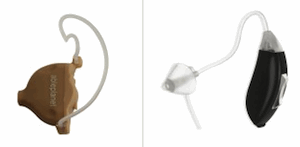




Wayne, great review. I’ve enjoyed your series. It’s the most in-depth critique of this vertical within our industry. Thank you for the time and effort.
I just his the soc sec age and hearing loss has been getting worse for the past five years. As a tech guy, I figured that there should be high tech options that sort of like the noise cancelling headphones at more reasonable prices. It seems that the old hearing aide technology has not changed much and the prices are still very high. A PC cost over $3,000 twenty years ago, now Best Buy gives you a superior, faster, bigger memory, with a flat screen for under $500….and it could be a laptop. Given the huge market for hearing aides, I expect to see other tech companies enter the business. I have only started to get serious and look at options.